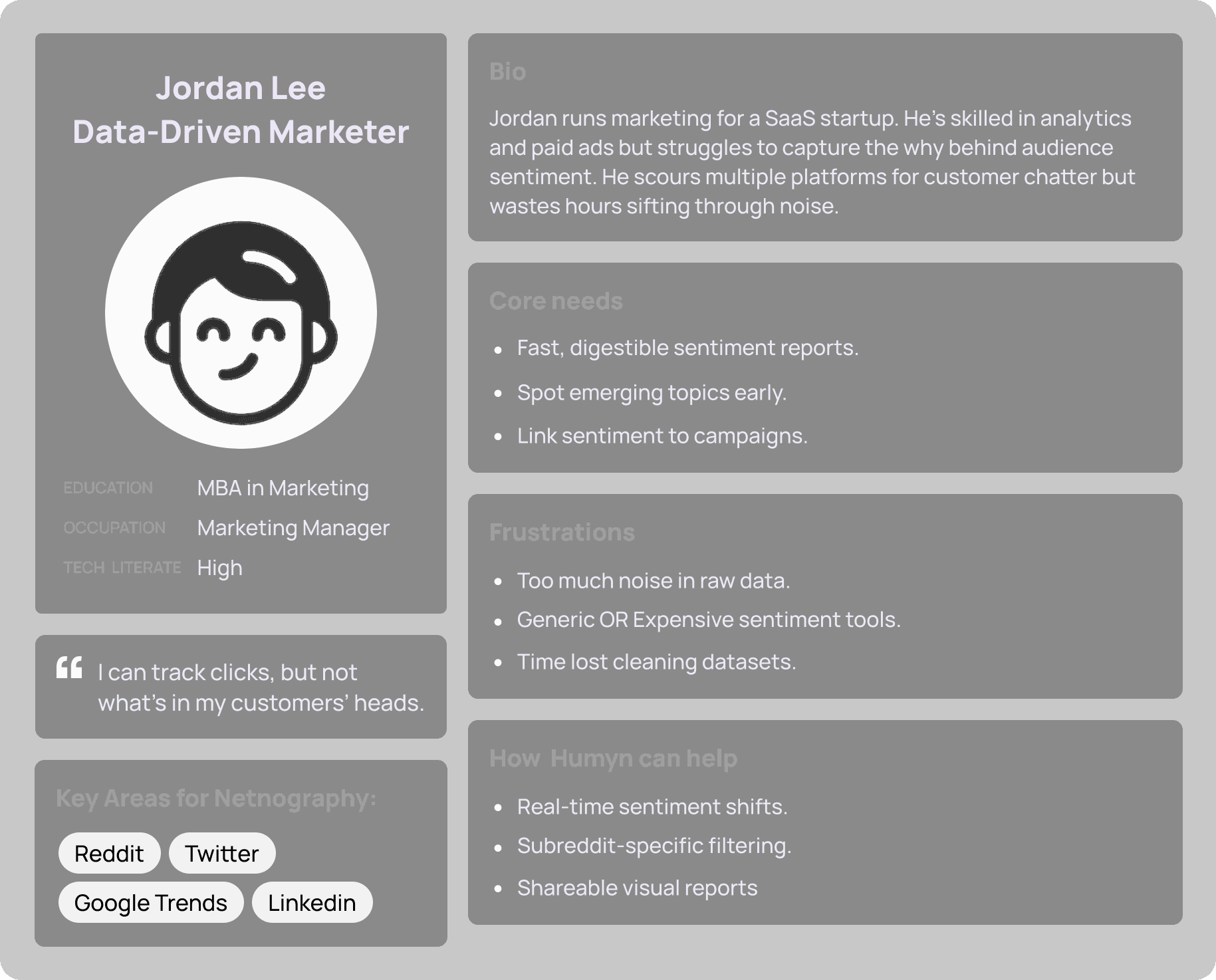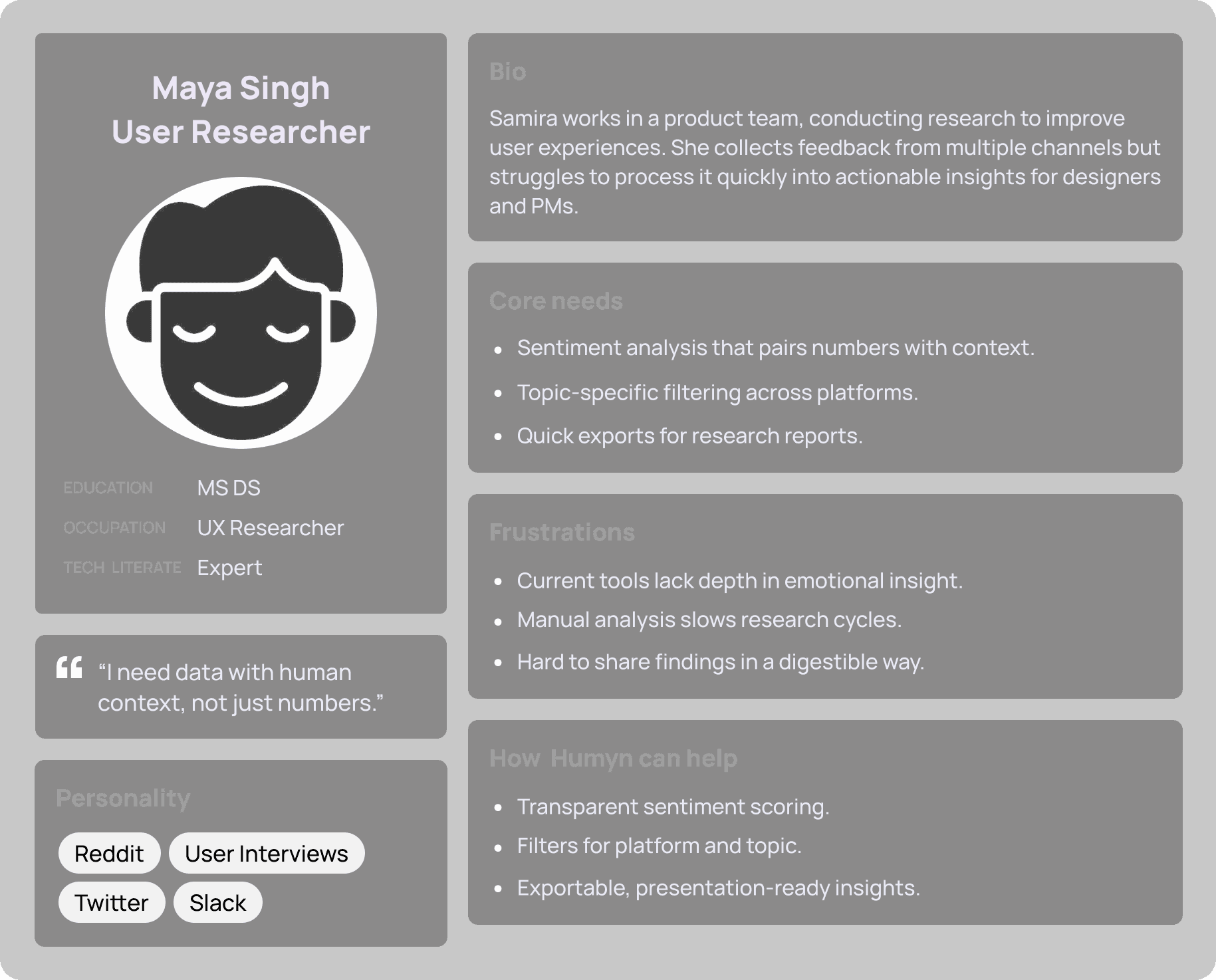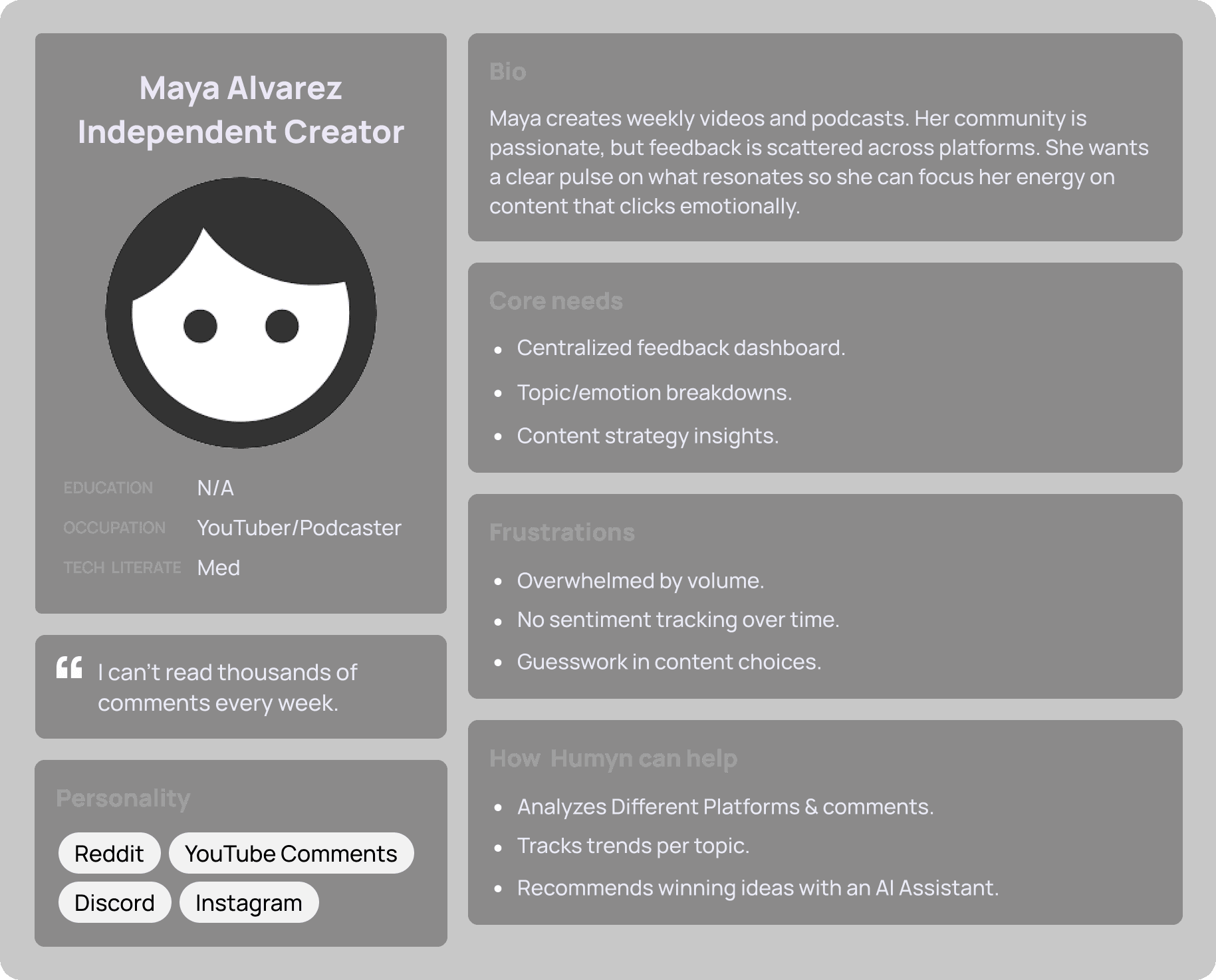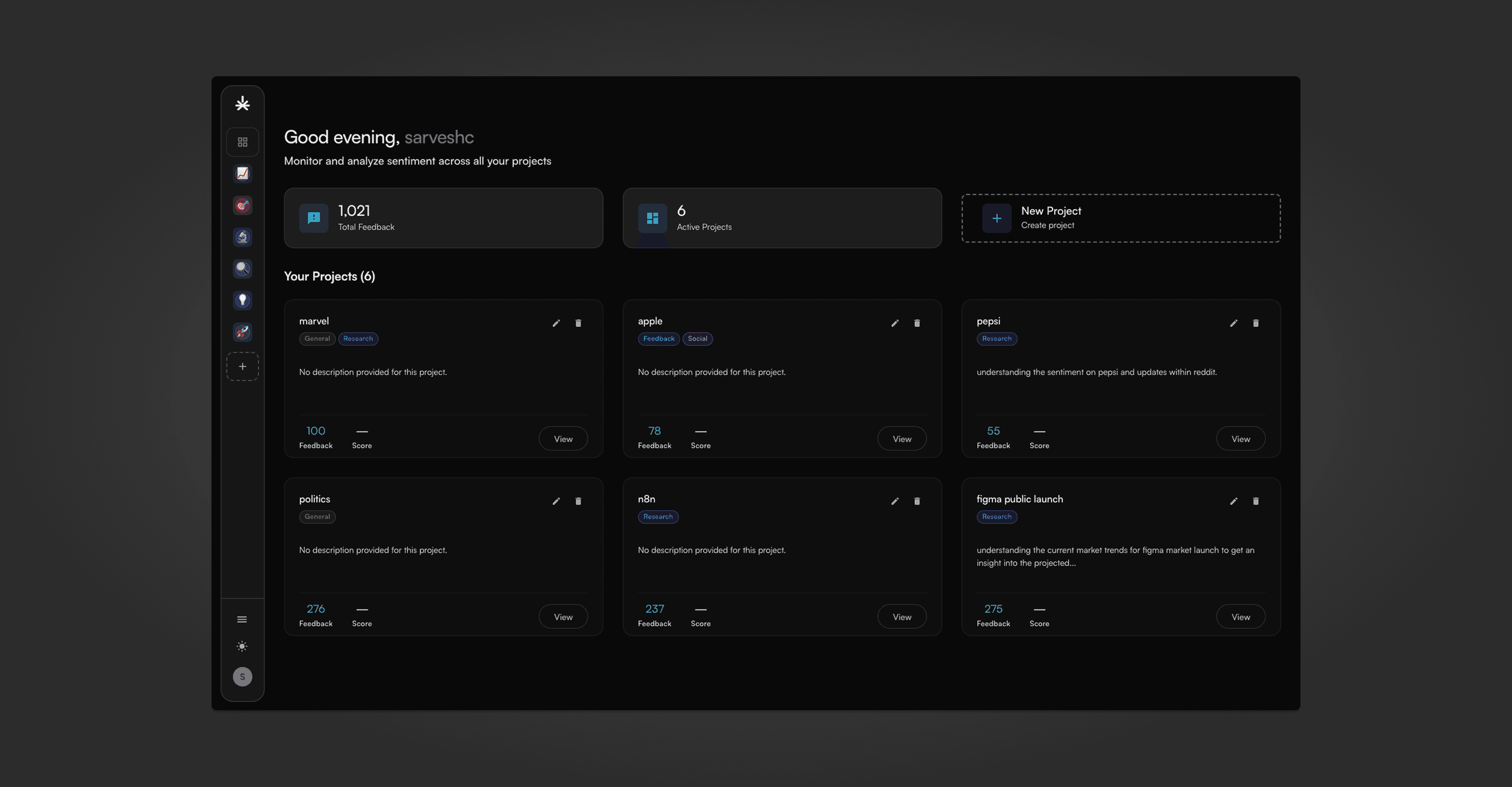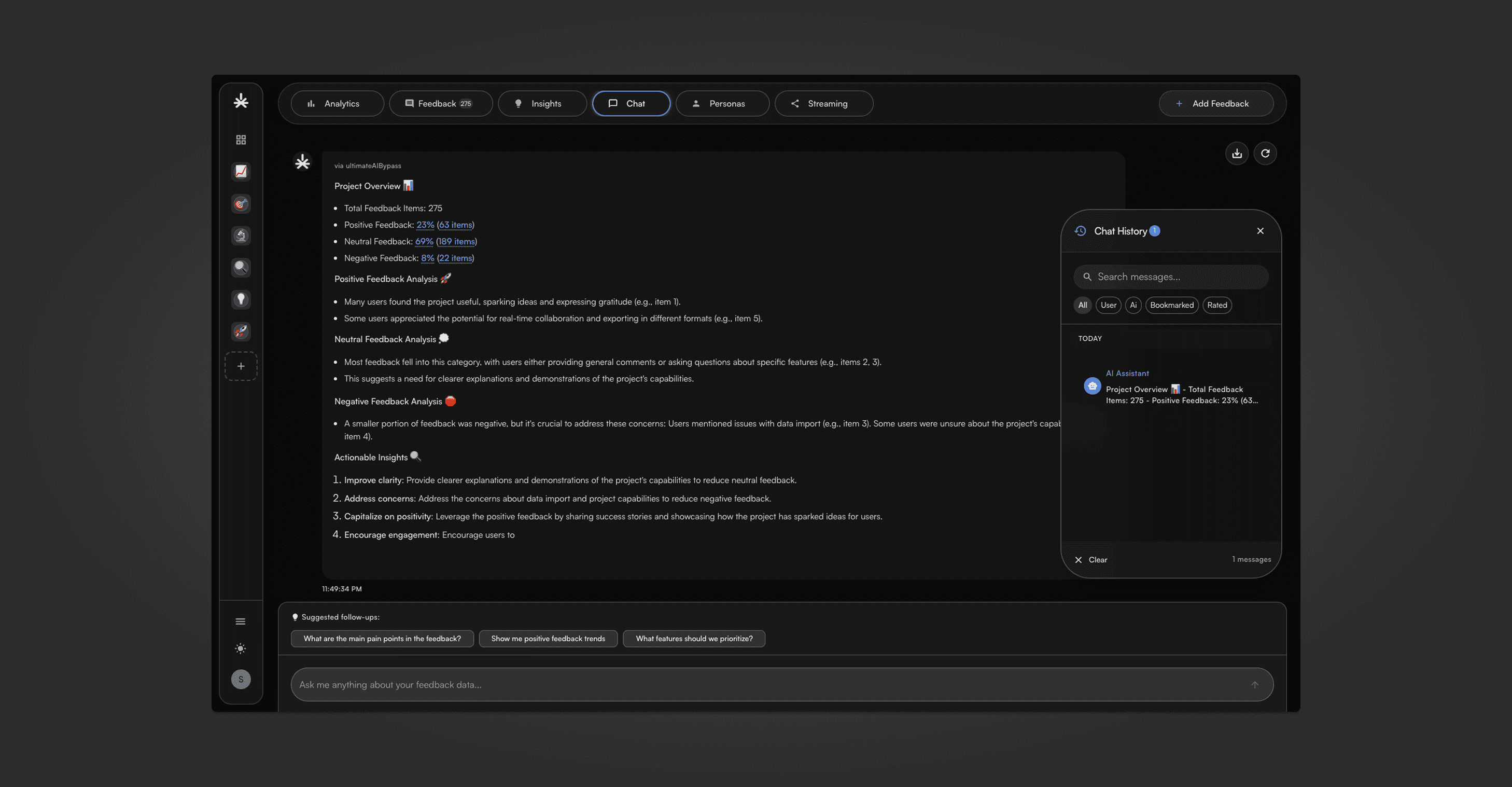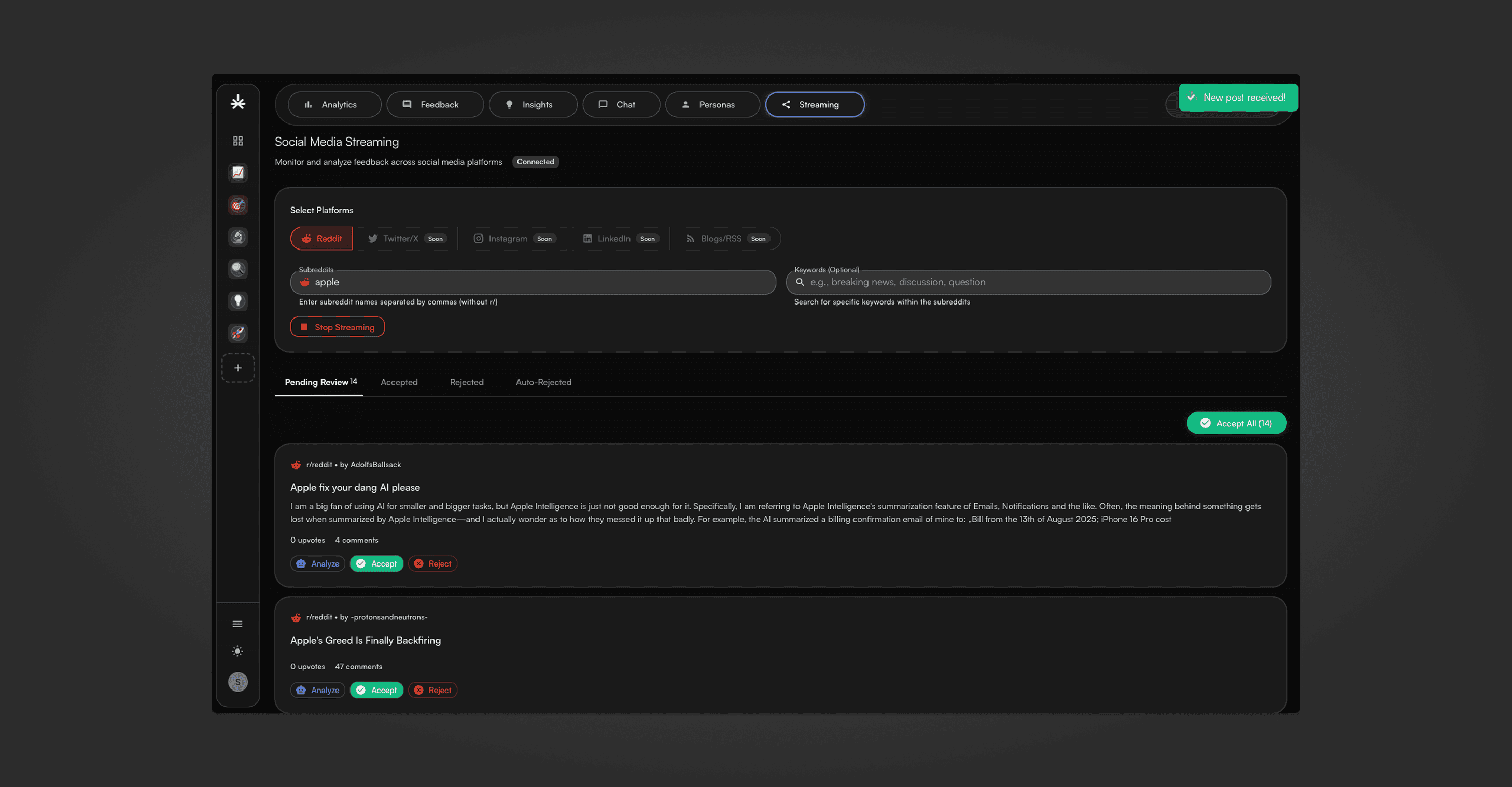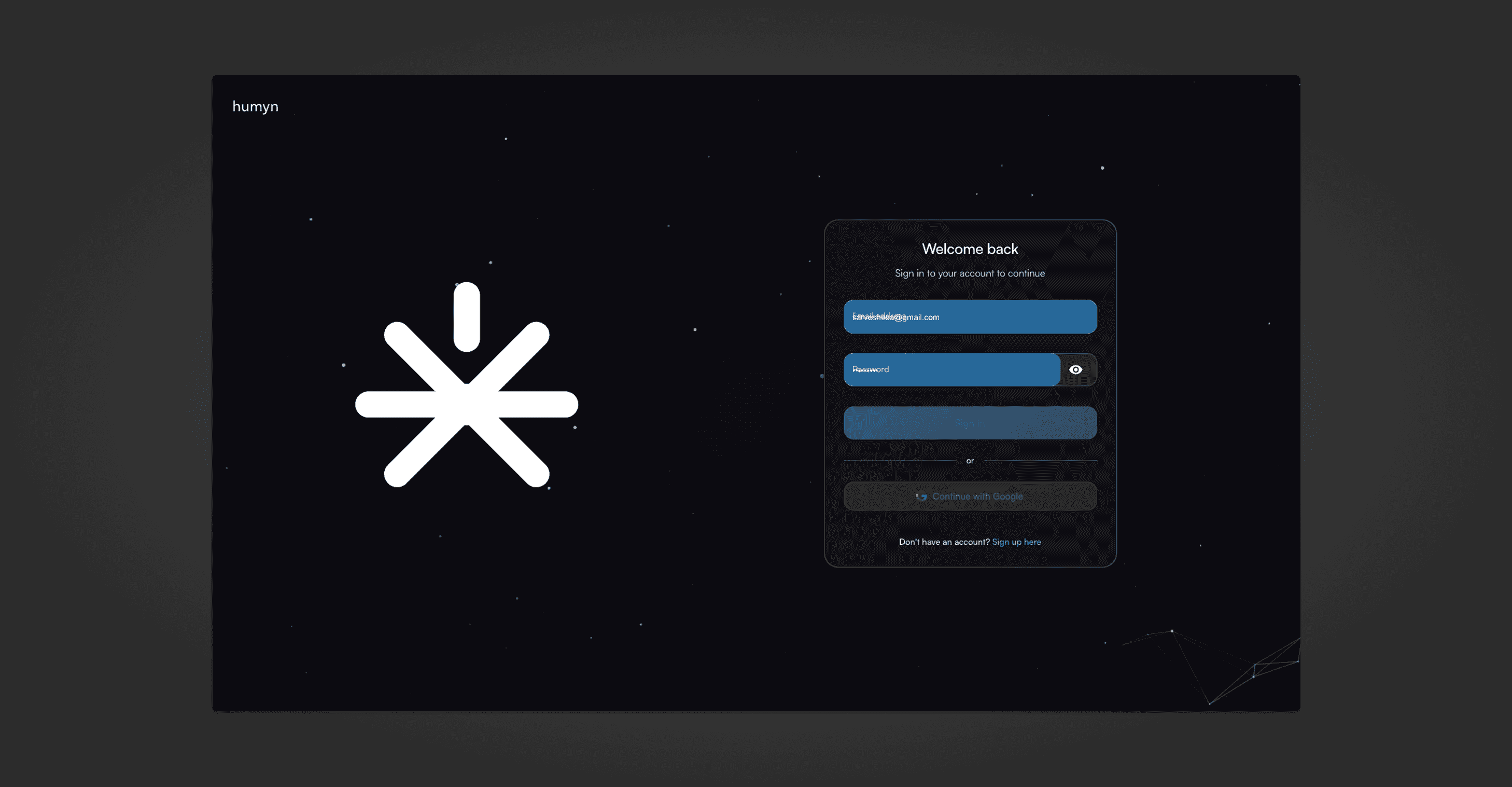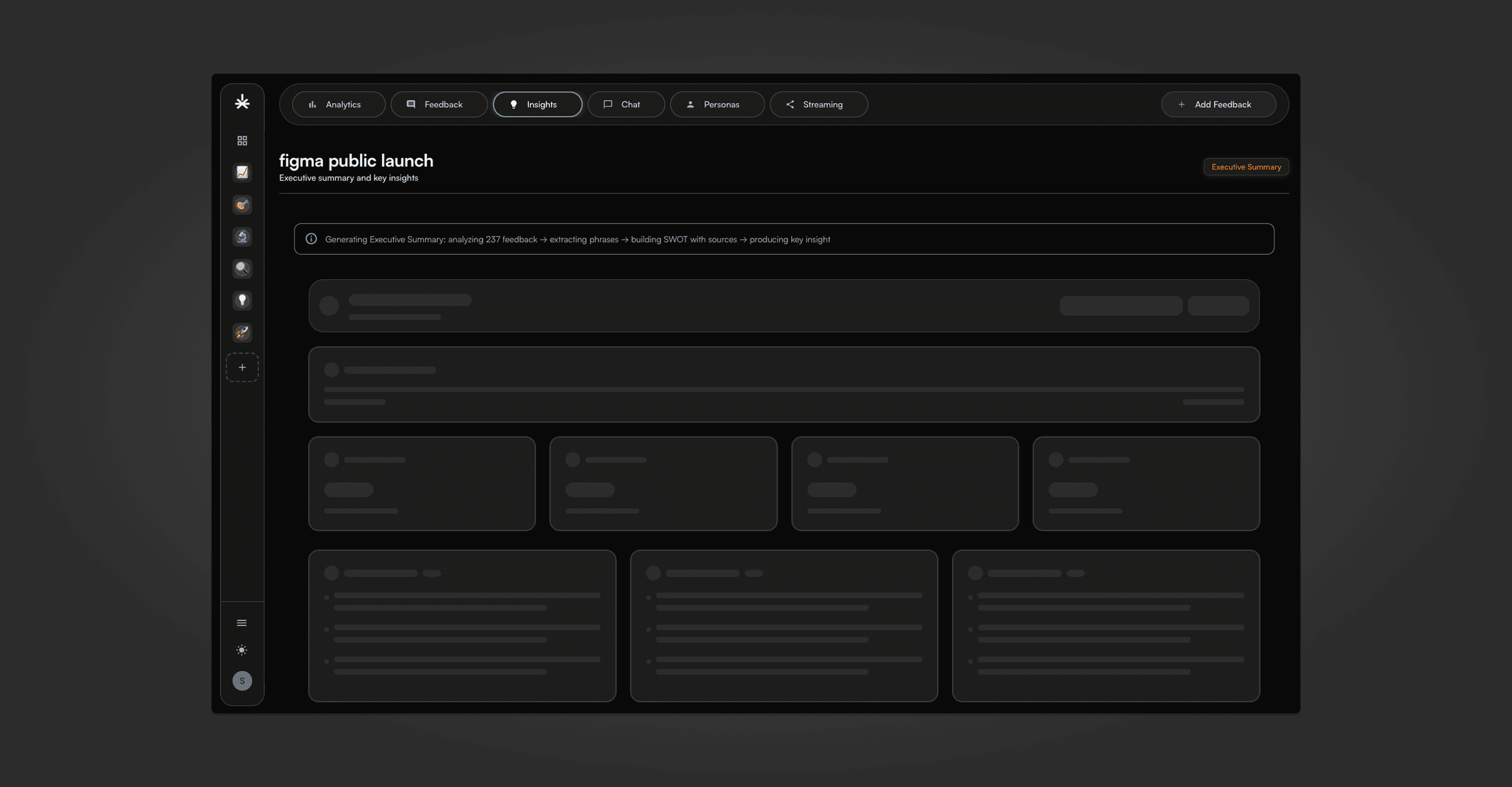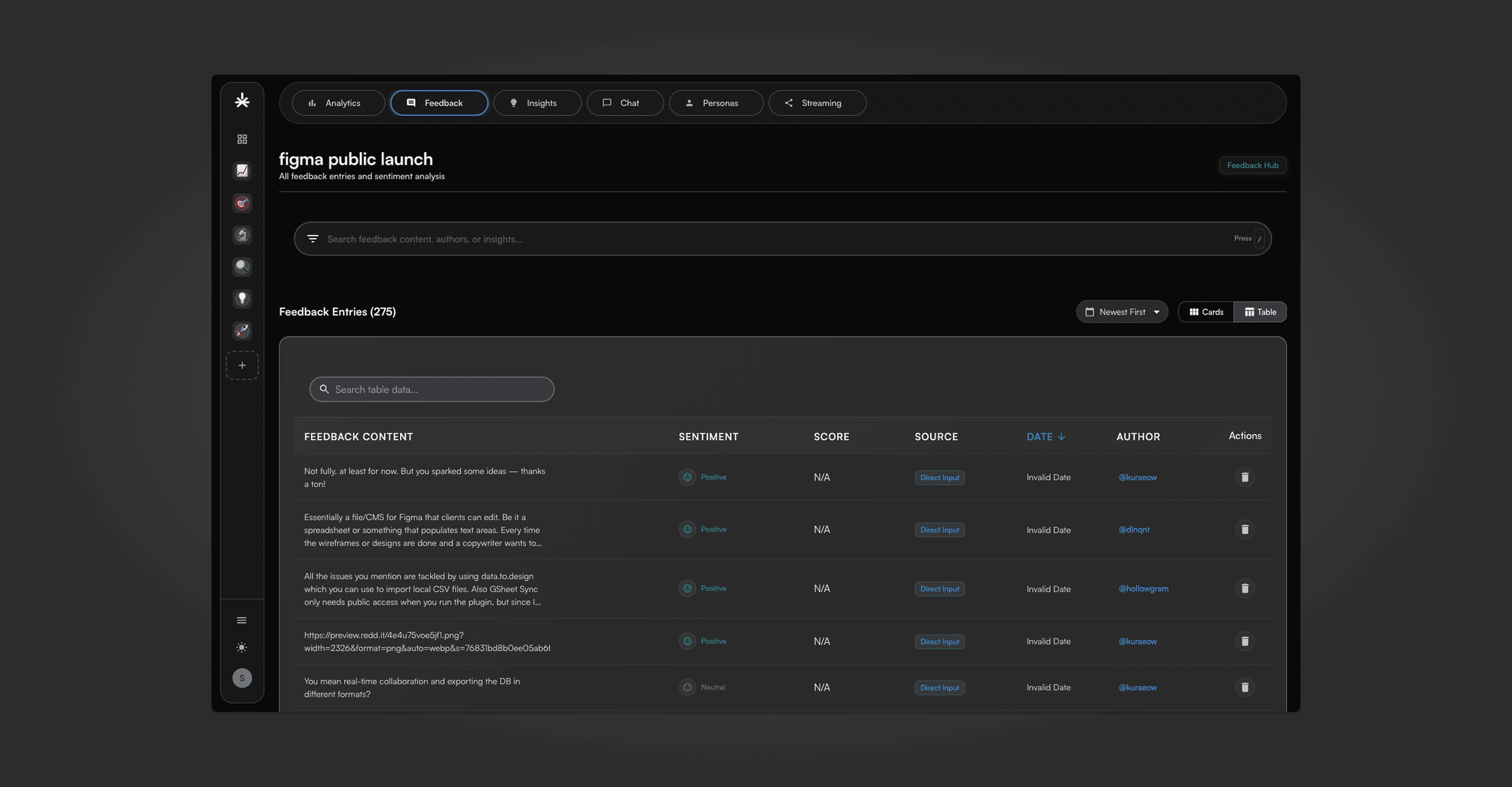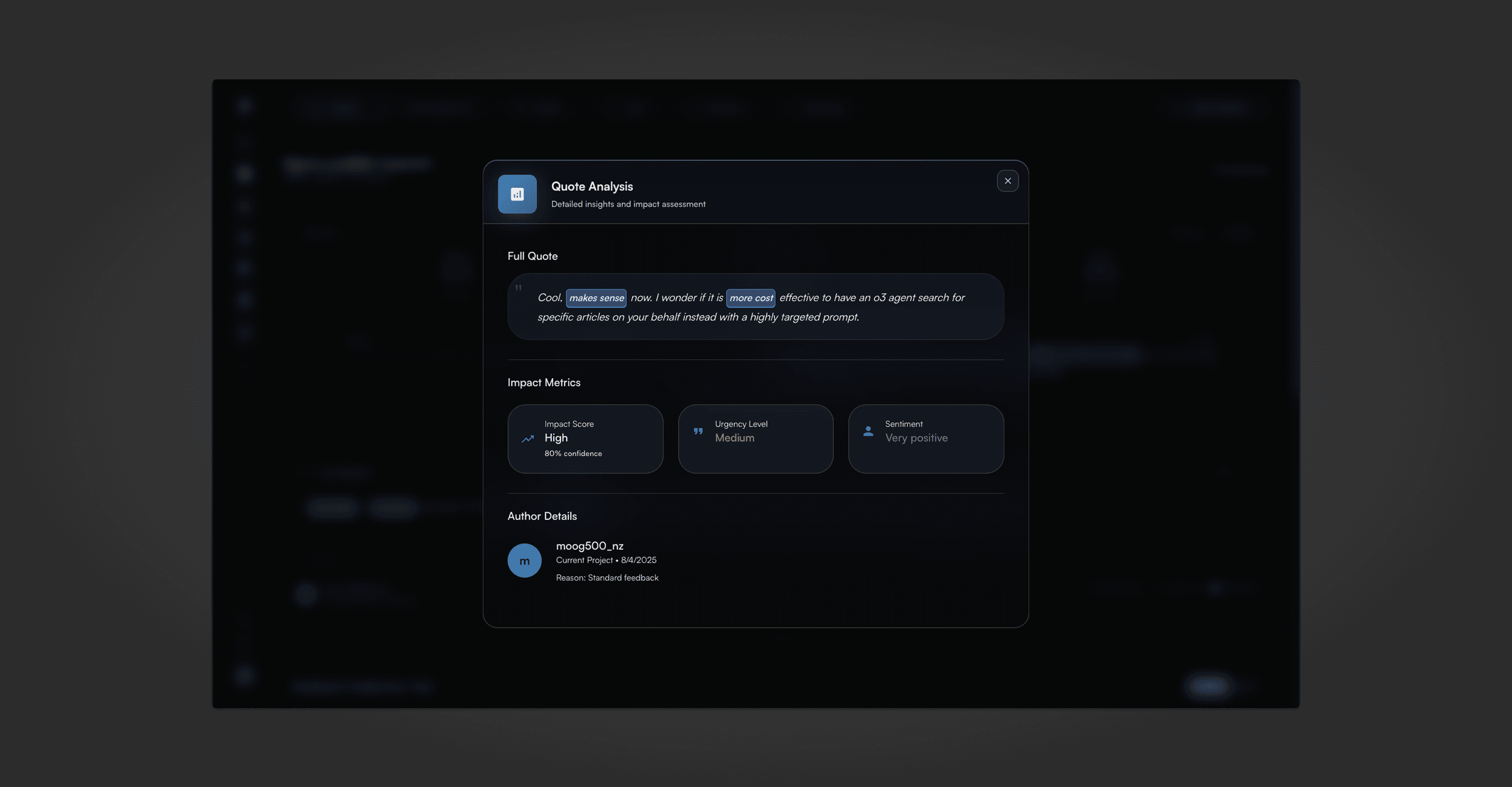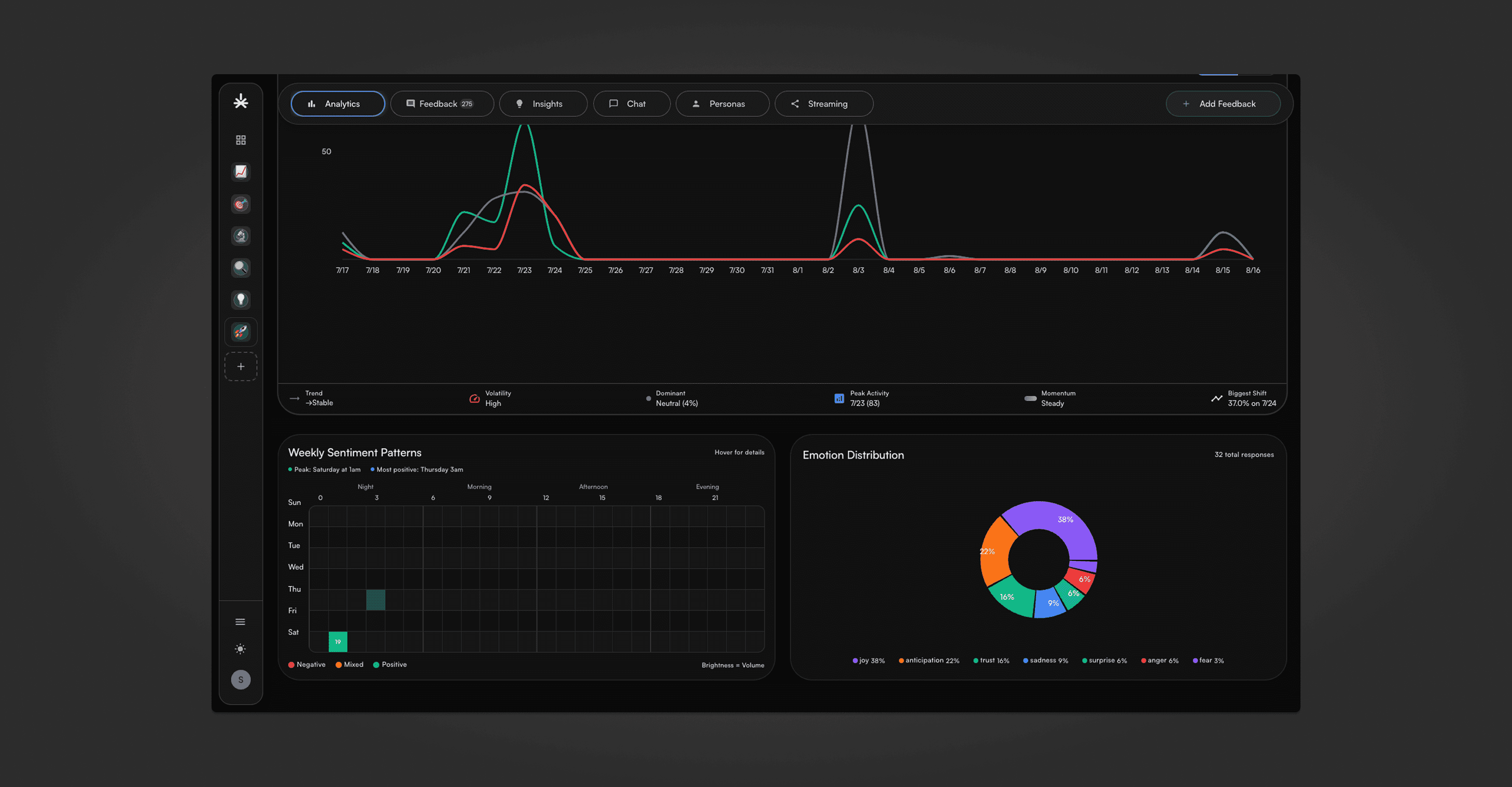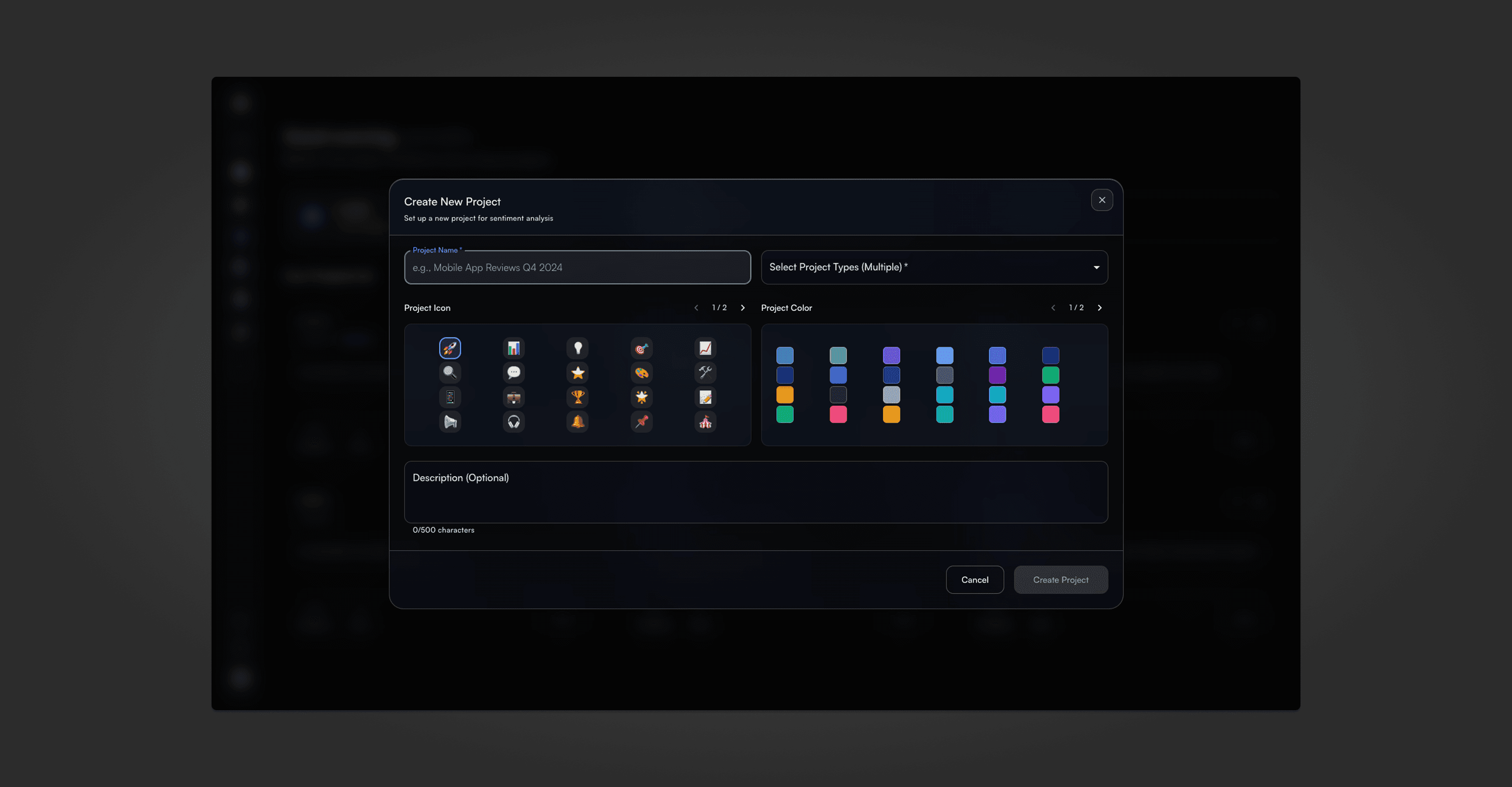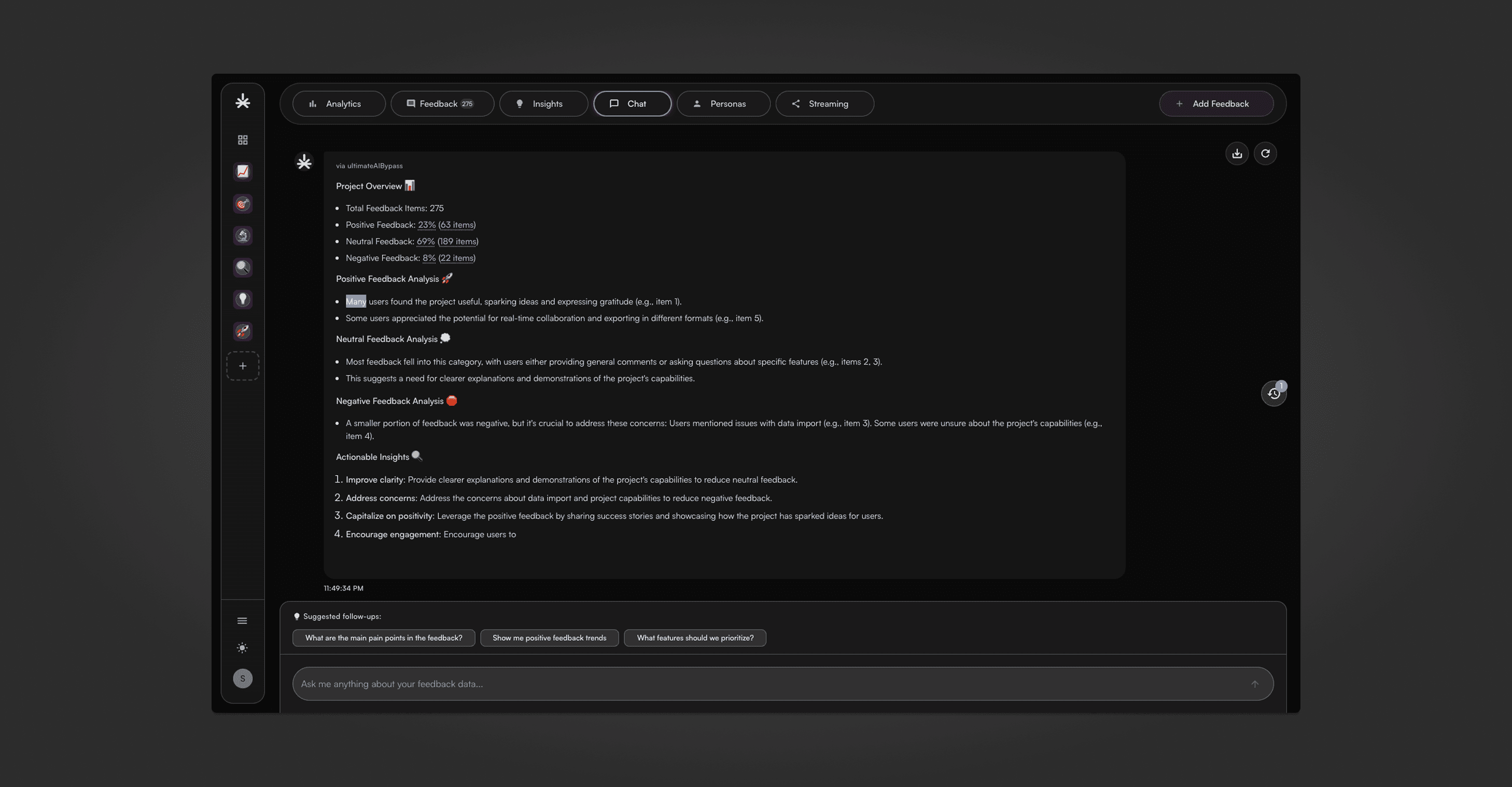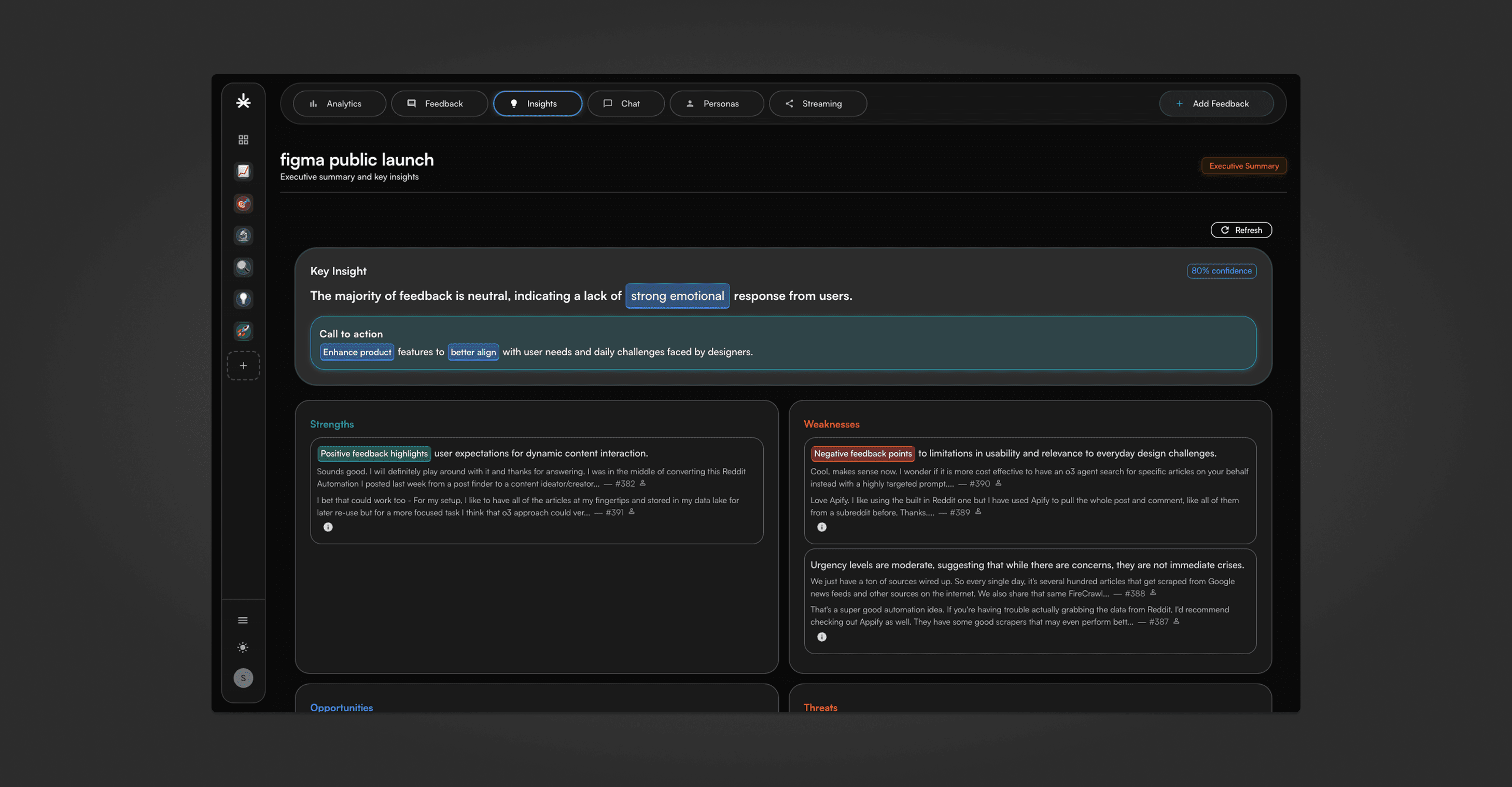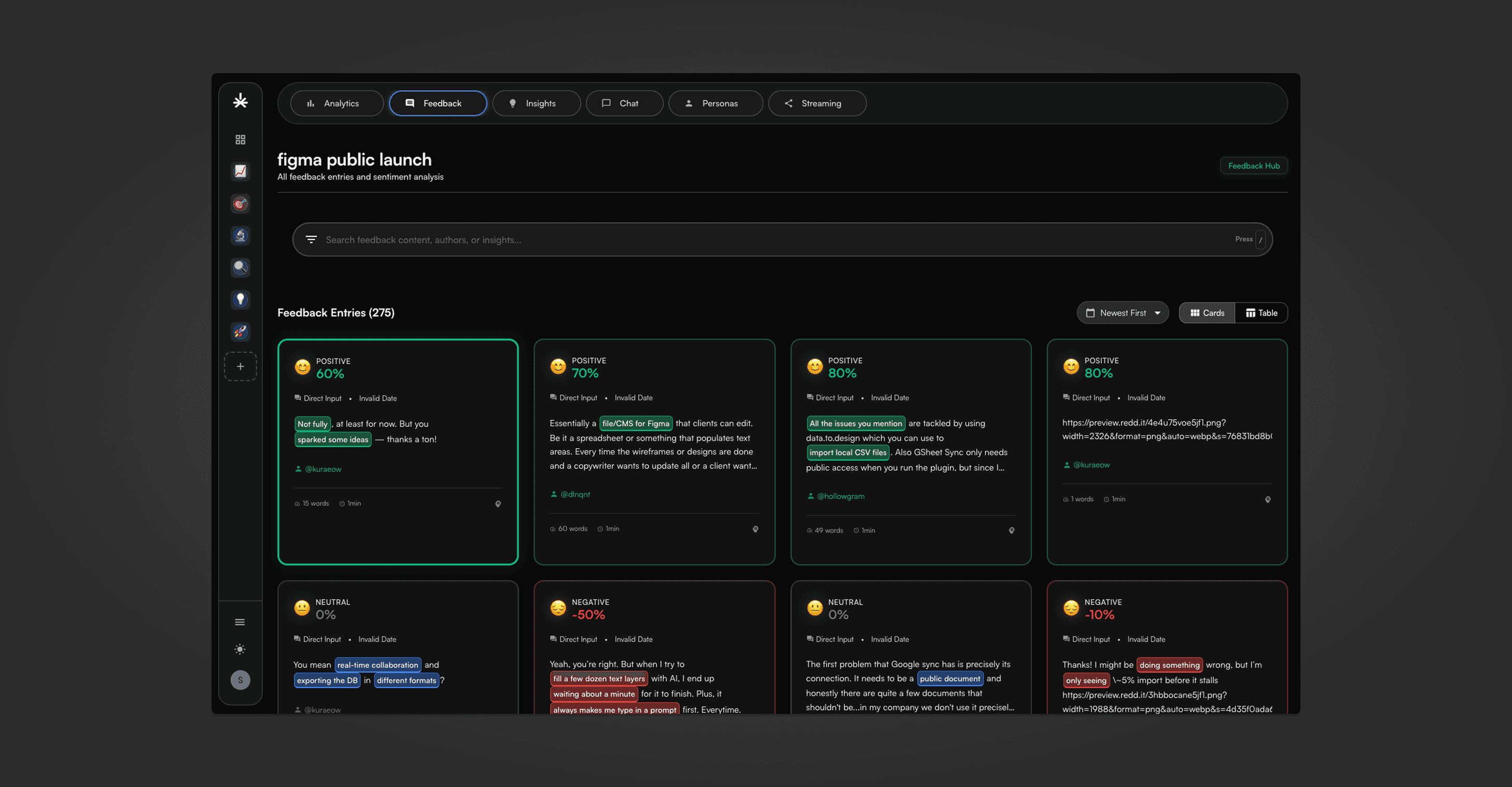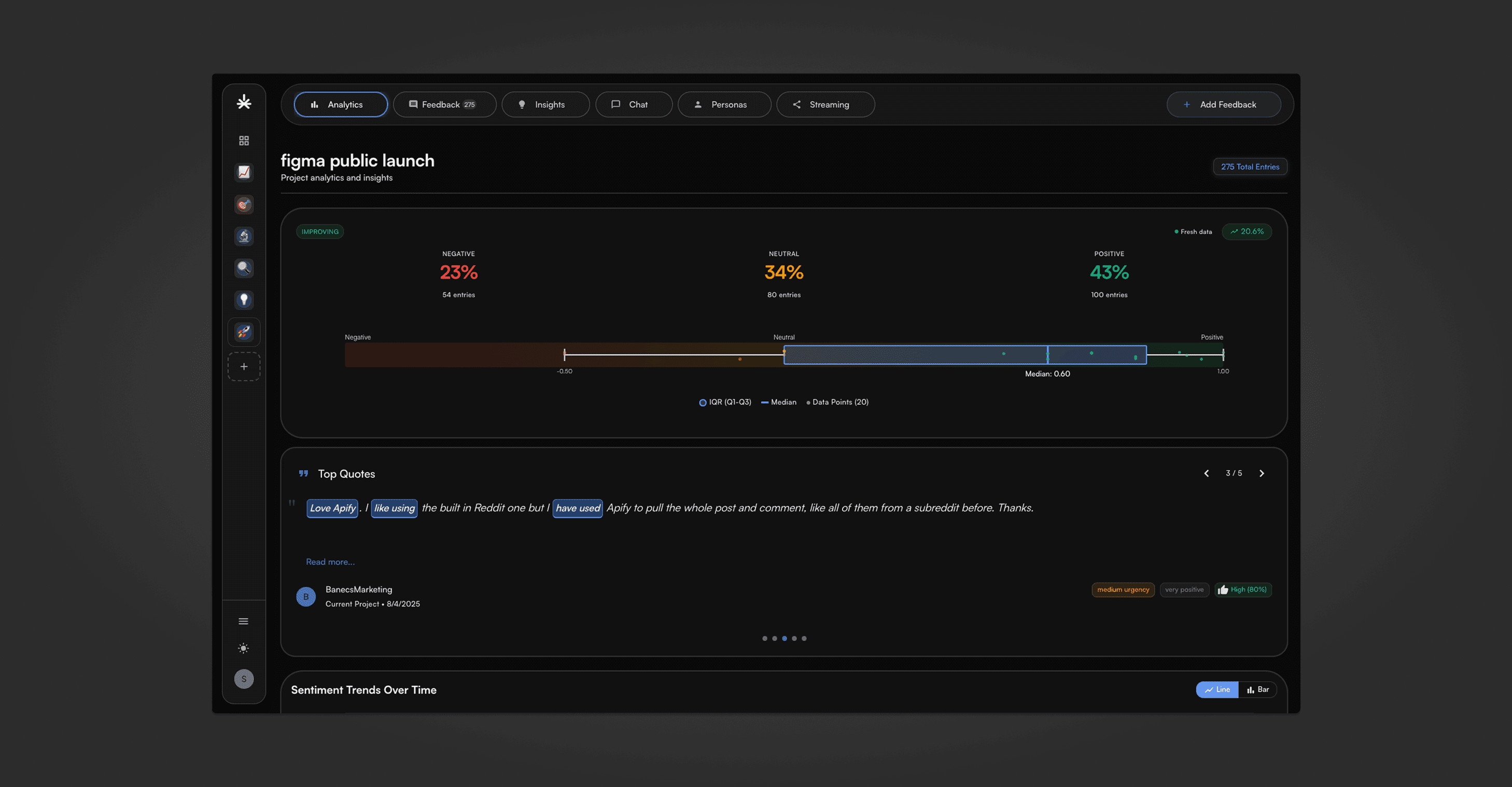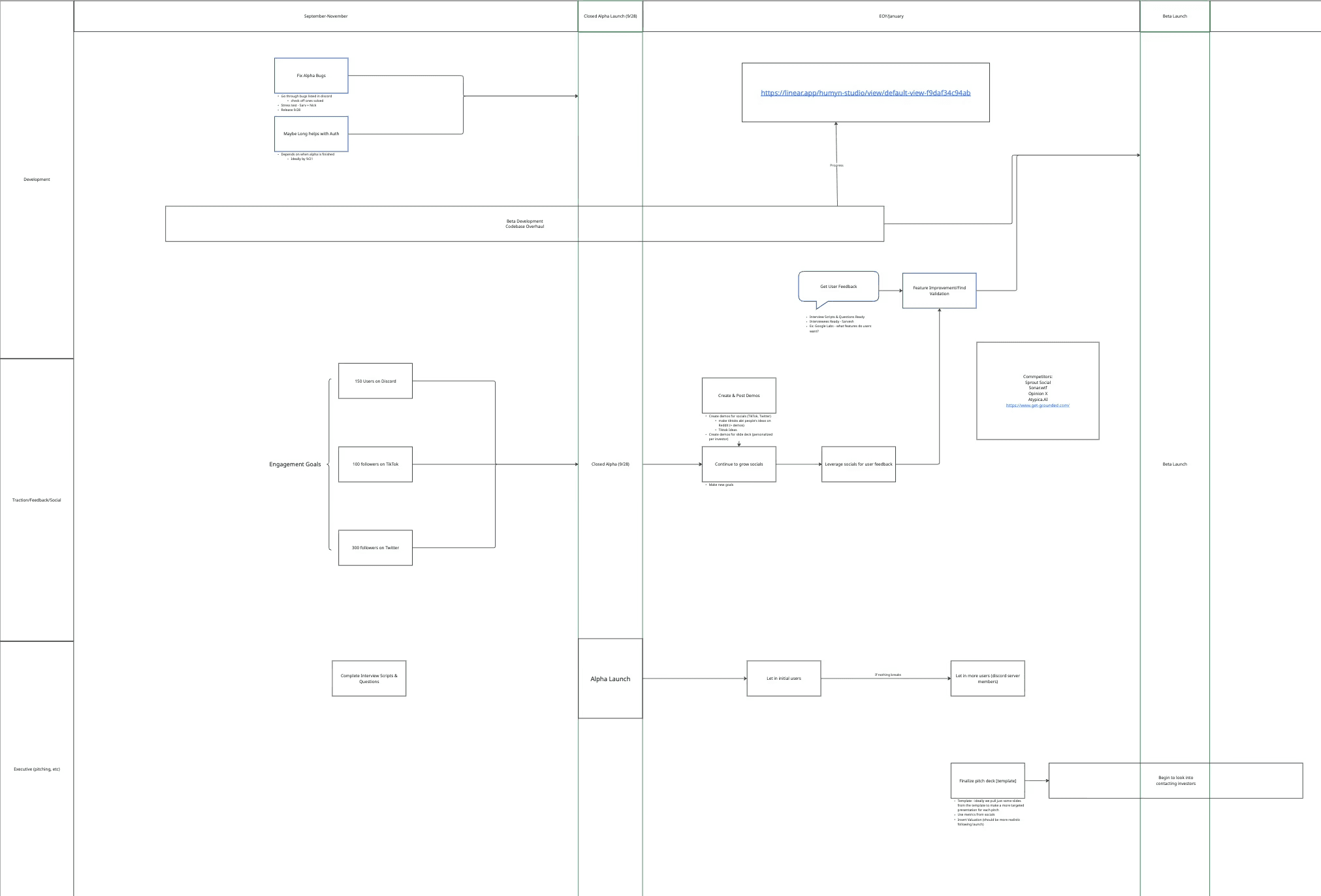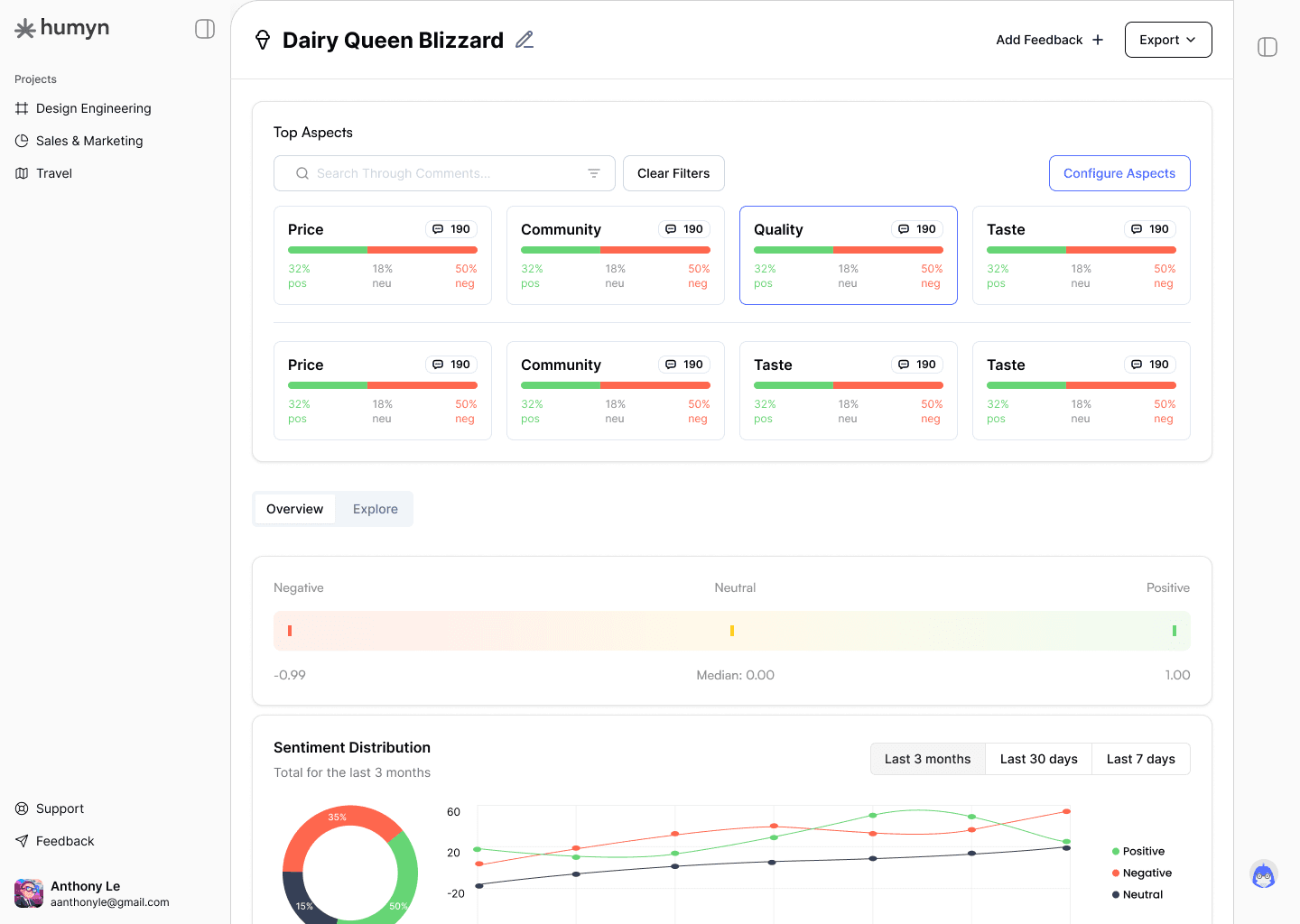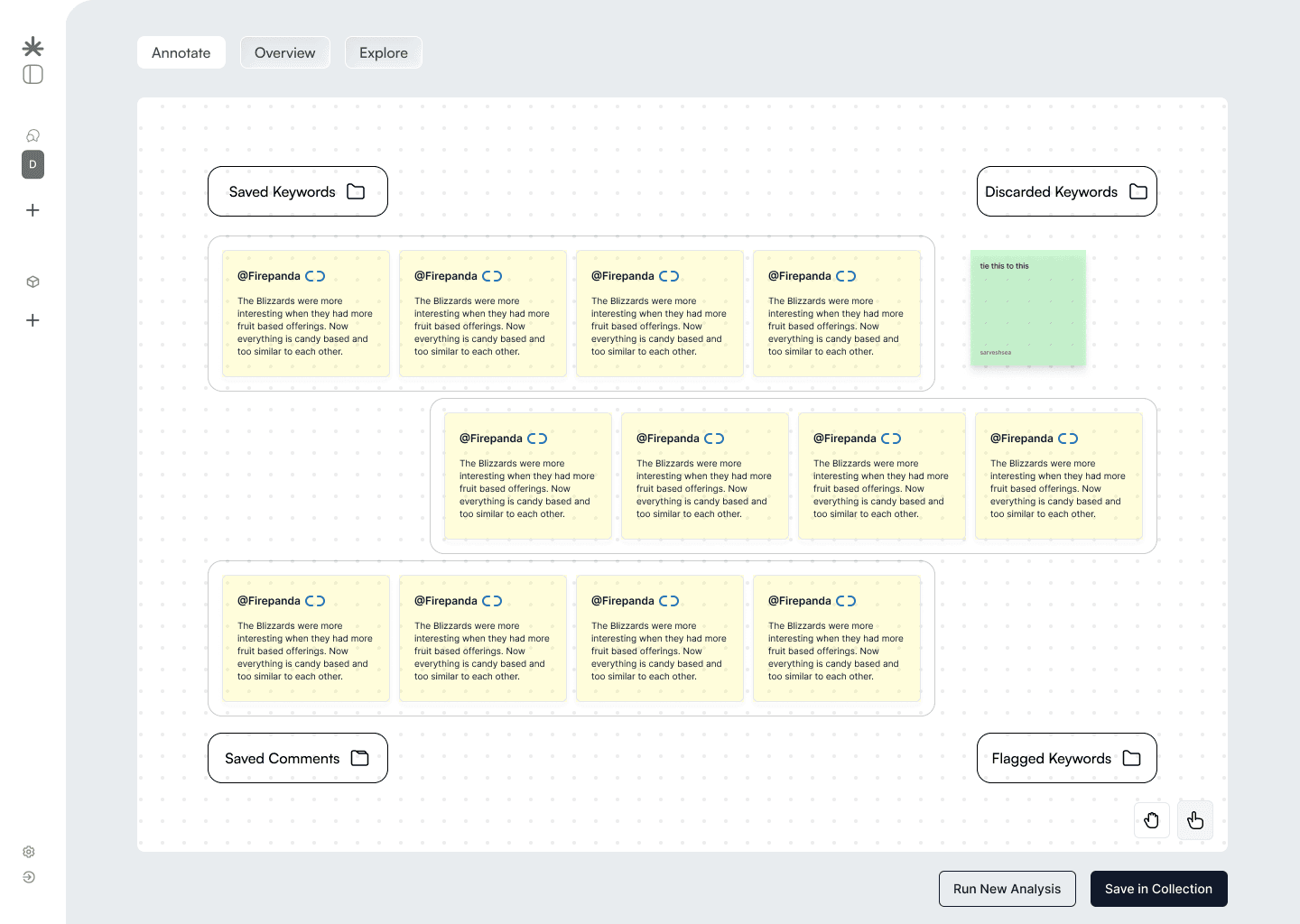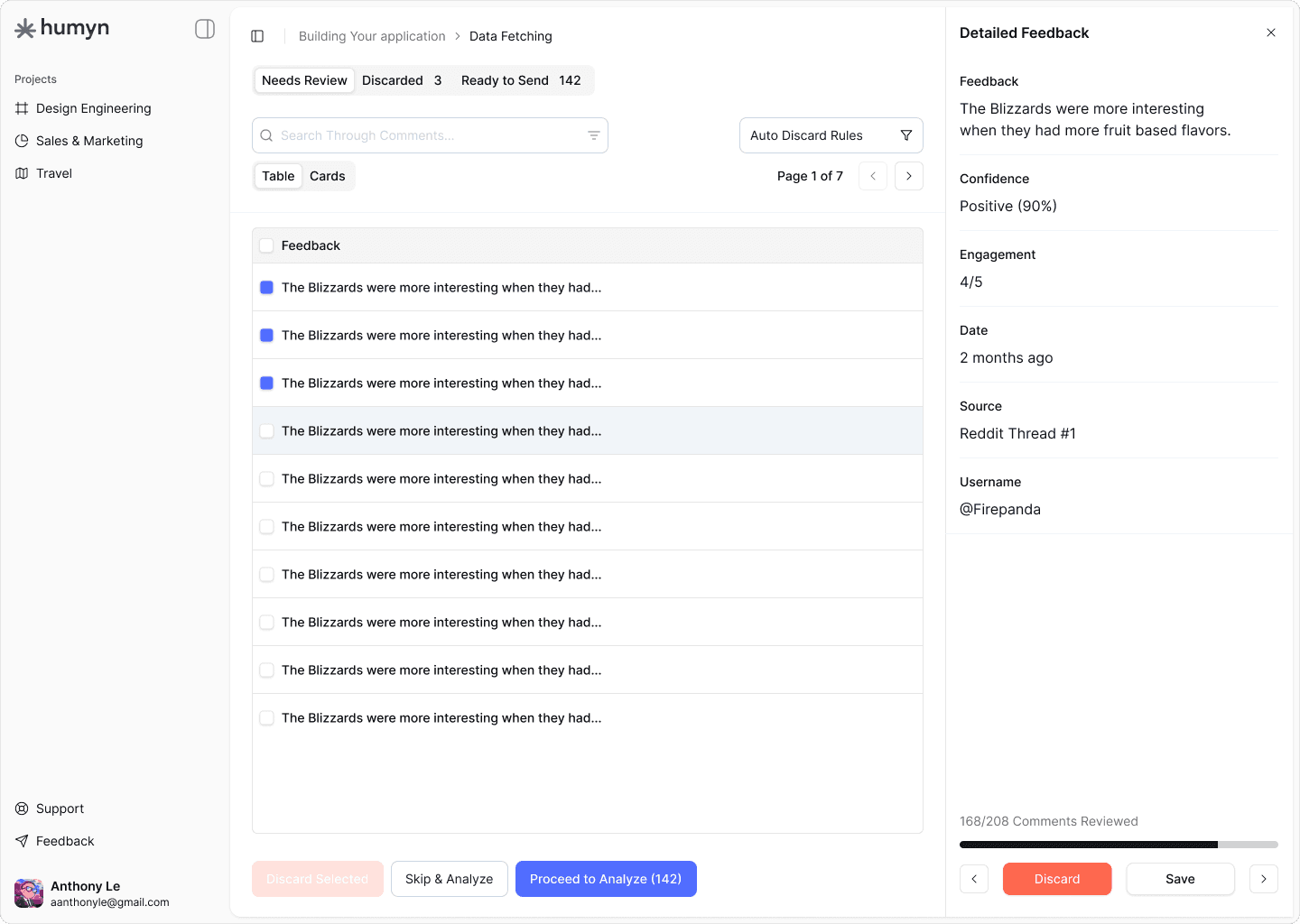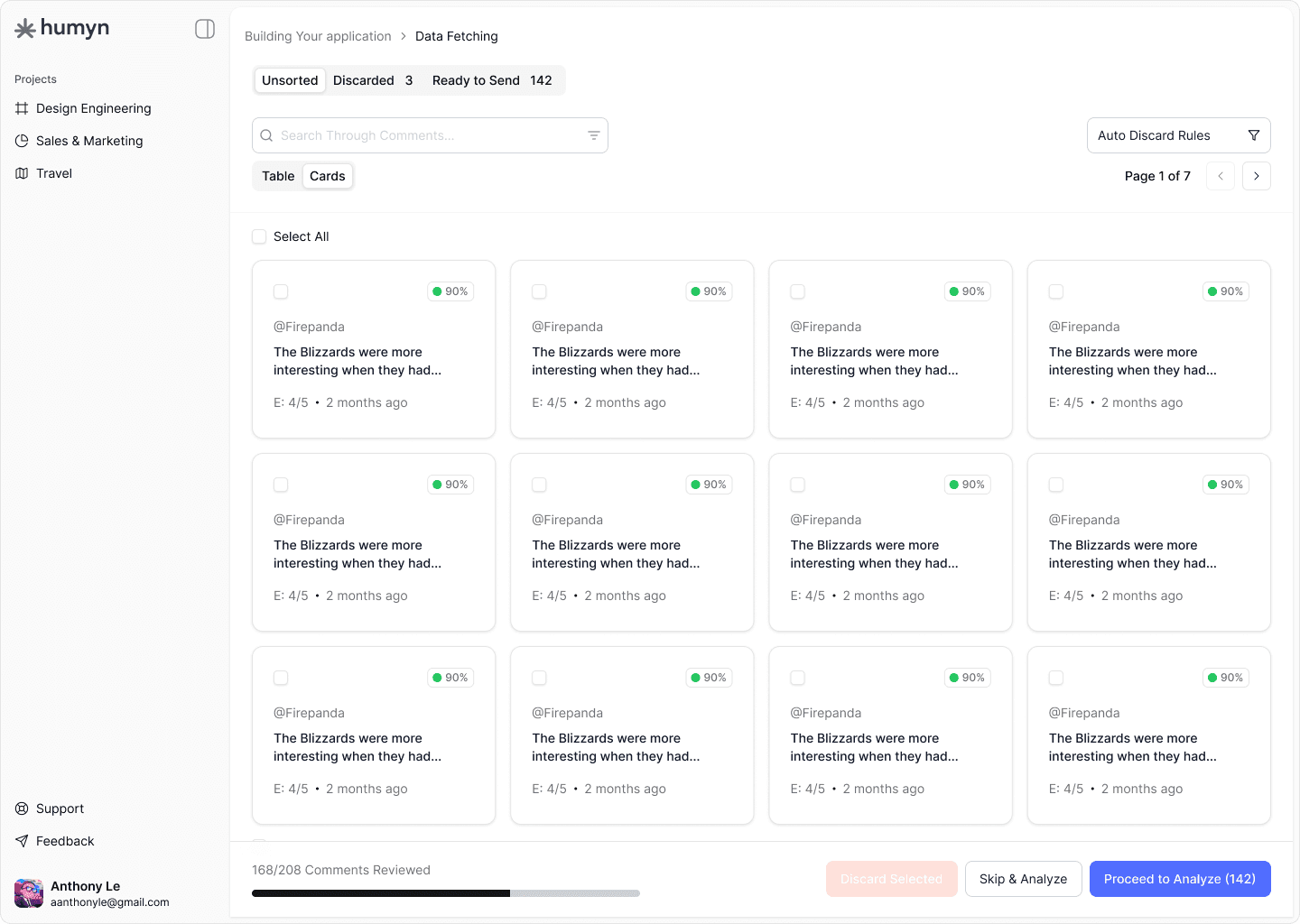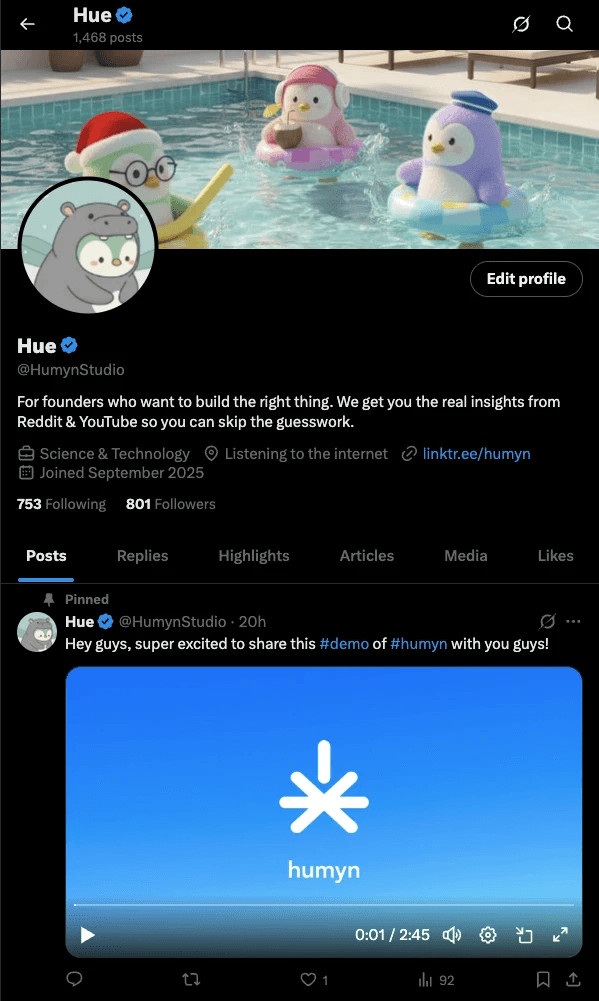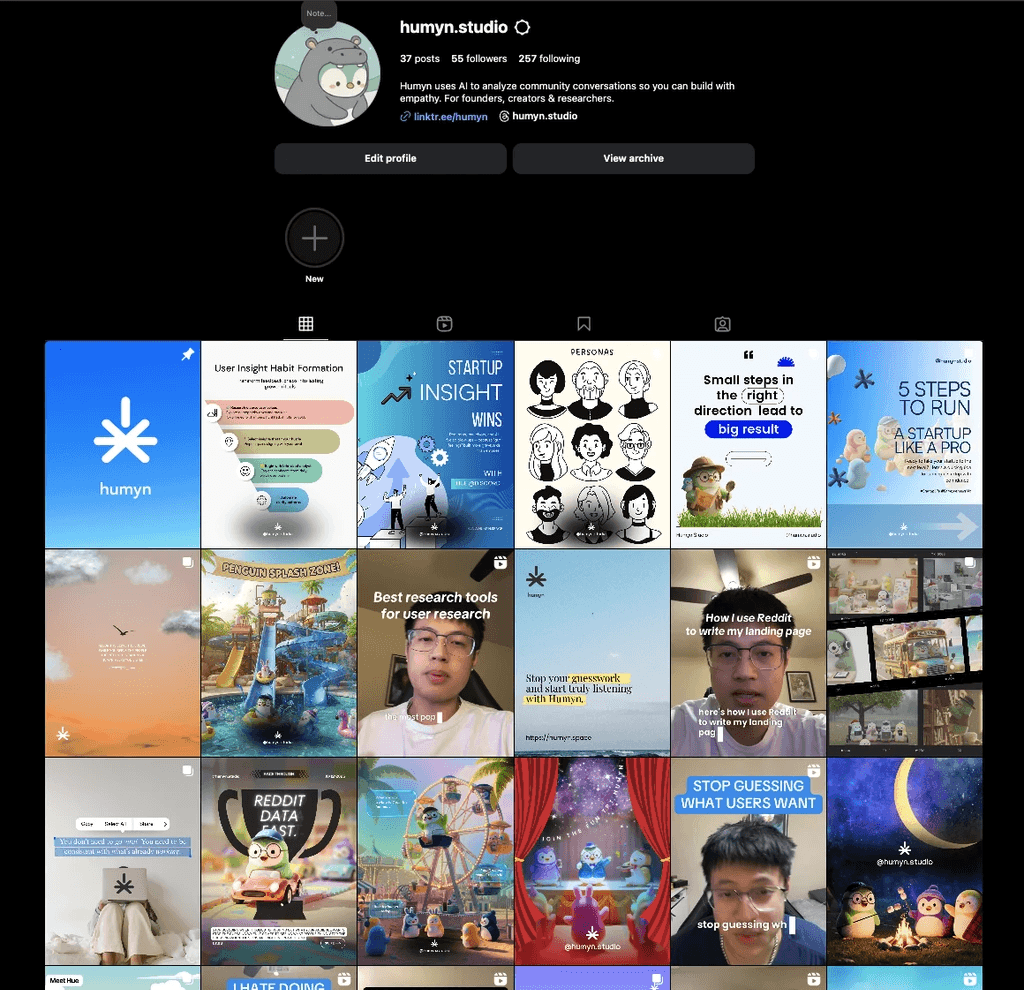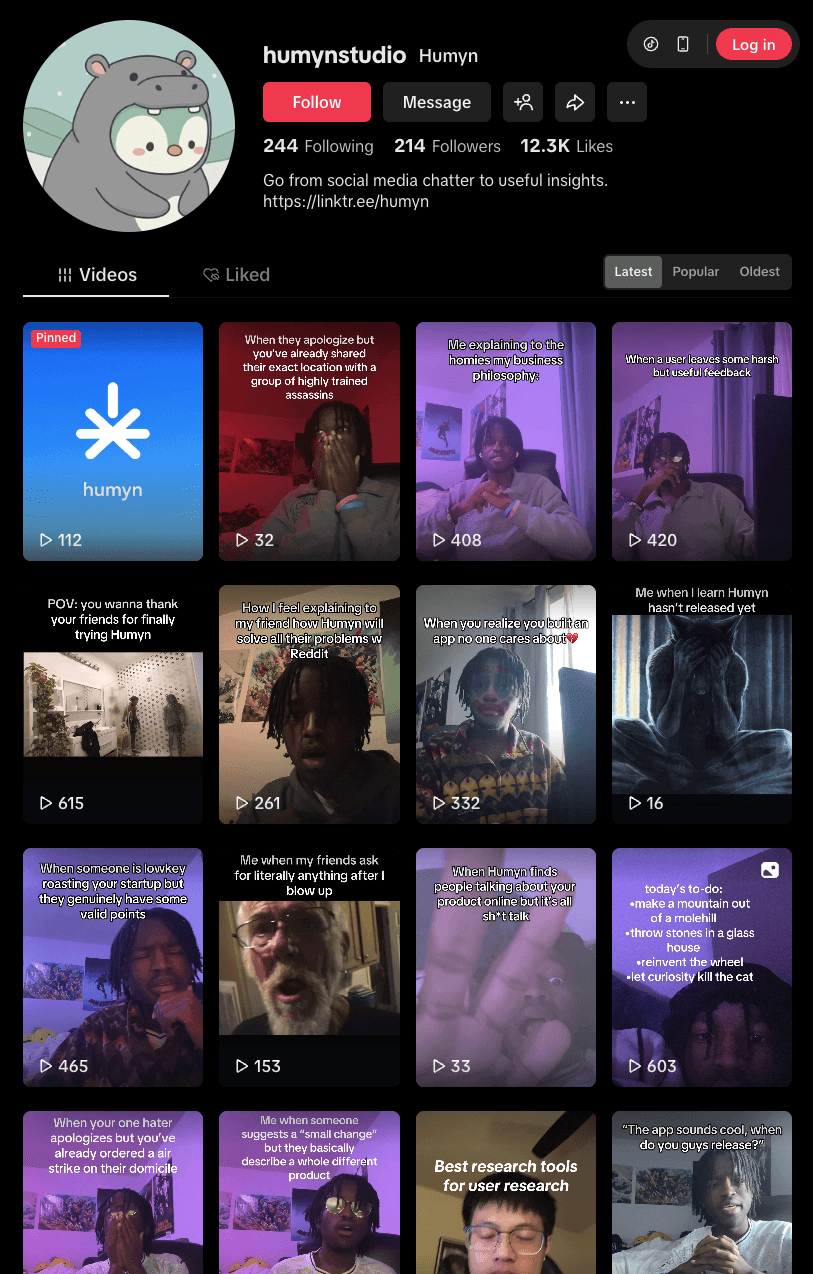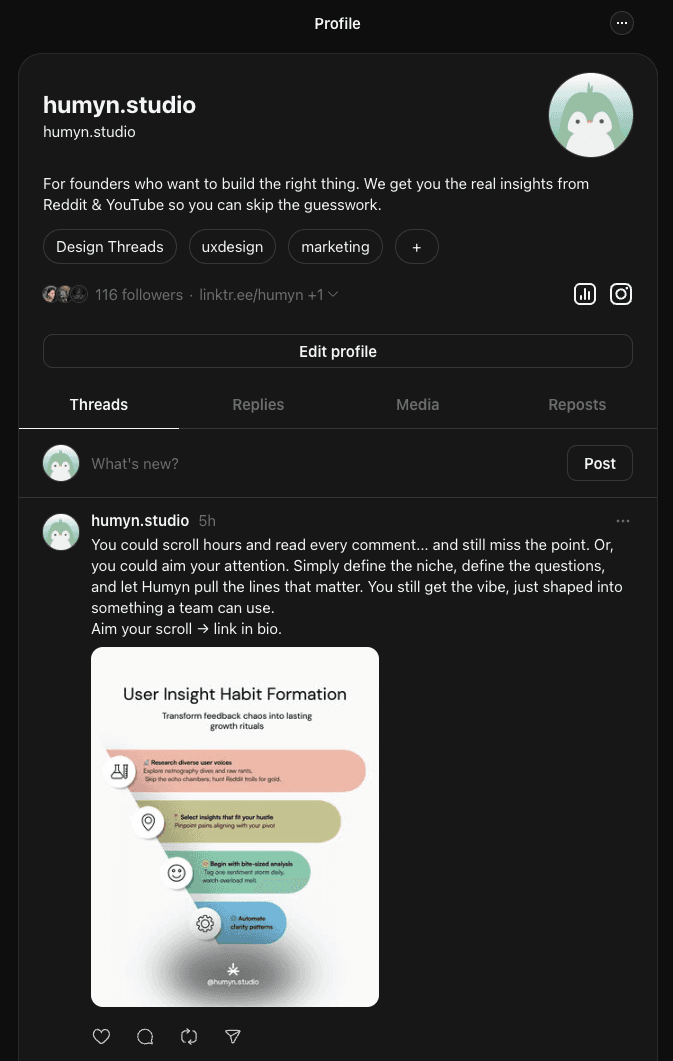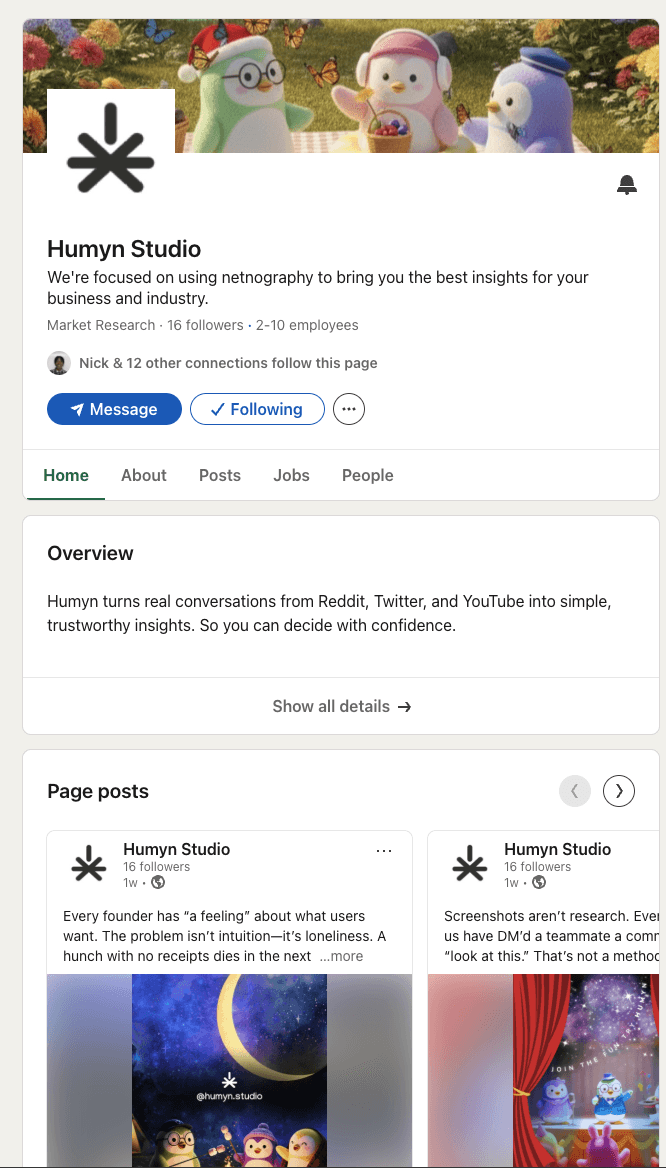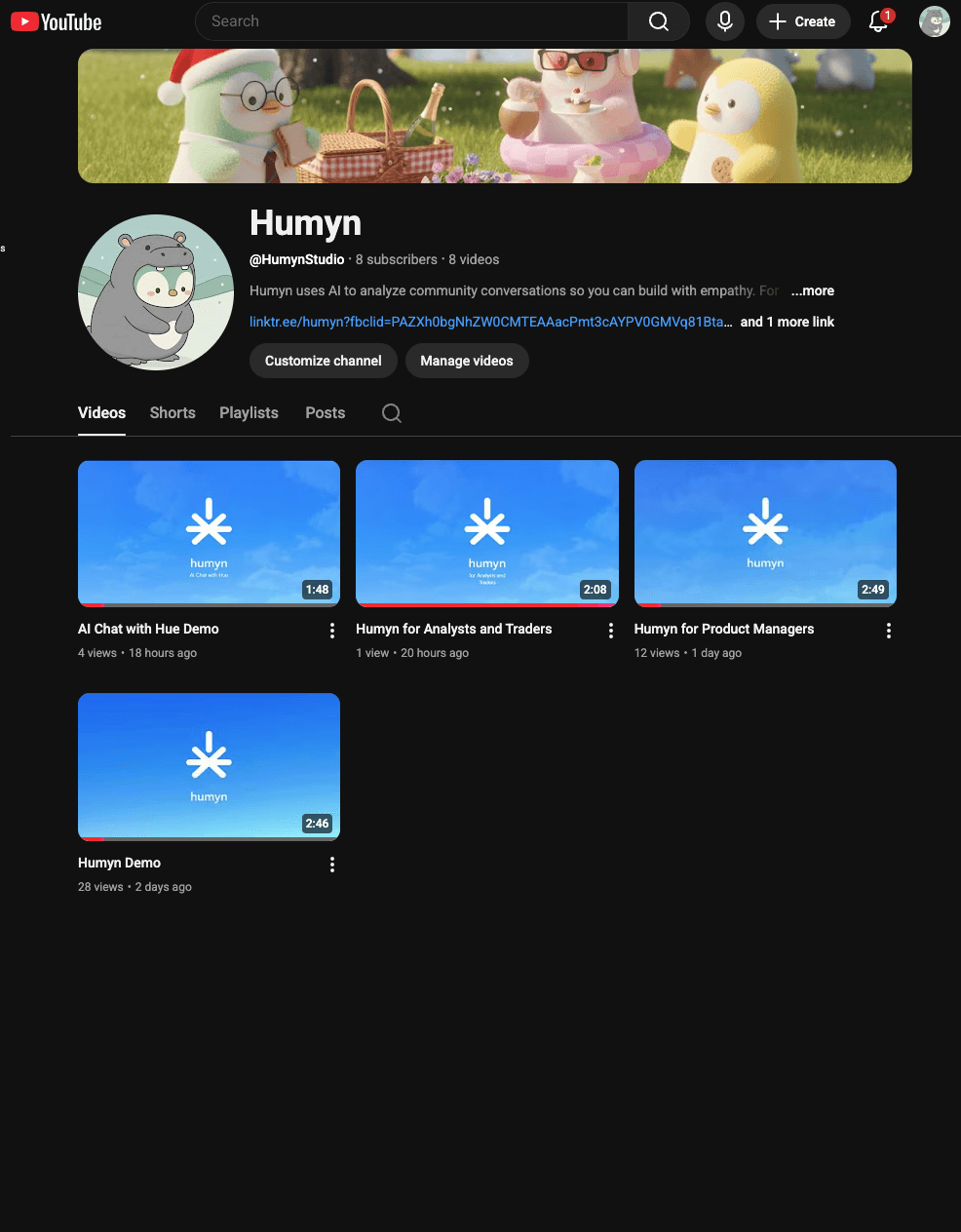My Role
dev, design, ad, sales, ops, strat.
SaaS Startup.
Humyn turns messy conversations into clear themes, sentiment by aspect, and source-linked quotes—so research and product teams can move faster with confidence.
I ideated, designed, built, led, marketed, and sold Humyn to the public — end to end.
From concept to live, public Launch 11/01
Posts and conversations analyzed during MVP testing.
Full product lifecycle ownership: research, design, engineering, deployment
User Research → Insights
Humyn started by accident. I was building a creative influencer tool, but every time I needed validation, I found myself back on Reddit, scrolling, tagging, and piecing together what people really felt.
After years of doing that manually, I realized the real problem wasn’t creativity,
it was understanding people at scale.
So I built Humyn to fix the process I’d been repeating for years, grounding it in:
10 user interviews with marketers and creators
Netnography across Reddit, YouTube, Discord, and X
Challenge (Research Outcome)
How can we surface real user pain points buried in thousands of community posts?
How do we turn raw sentiment into clear, contextual insights.
I Had no buy in…
Prototype to Proof
I spent 6 months building, learning and researching the first MVP, testing feasibility, validating use cases, and proving the real need.
That prototype became momentum. It showed enough promise to attract a team of developers, designers, and collaborators ready to turn an idea into a real product.
The Stack I learned to build this…
TypeScript, Python, Java (languages).
CC, Codex, Task Manager, Cursor (Learning. & Dev)
Figma Dev API (UI + Canvas Integration).
React (Widget Interface + Chrome Extension Build)
Supabase (Virtual Database)
OpenRouter (LLM Control Center)
Jest (Integration Testing)
Github (CI/CD, lint, type-check)
Vercel (Front-end Deployment Host)
Fly.io (Backend Host)
Building the Real Product…
Got a team, now what?
Once the team joined, we shifted to building a product grounded in design and clean engineering.
We mapped user and dev flows in Miro, built a unified roadmap, and crafted every system by hand.
From branding to backend, every choice served one goal: clarity, transparency, and purpose.
Alignment Roadmaps
User Flow
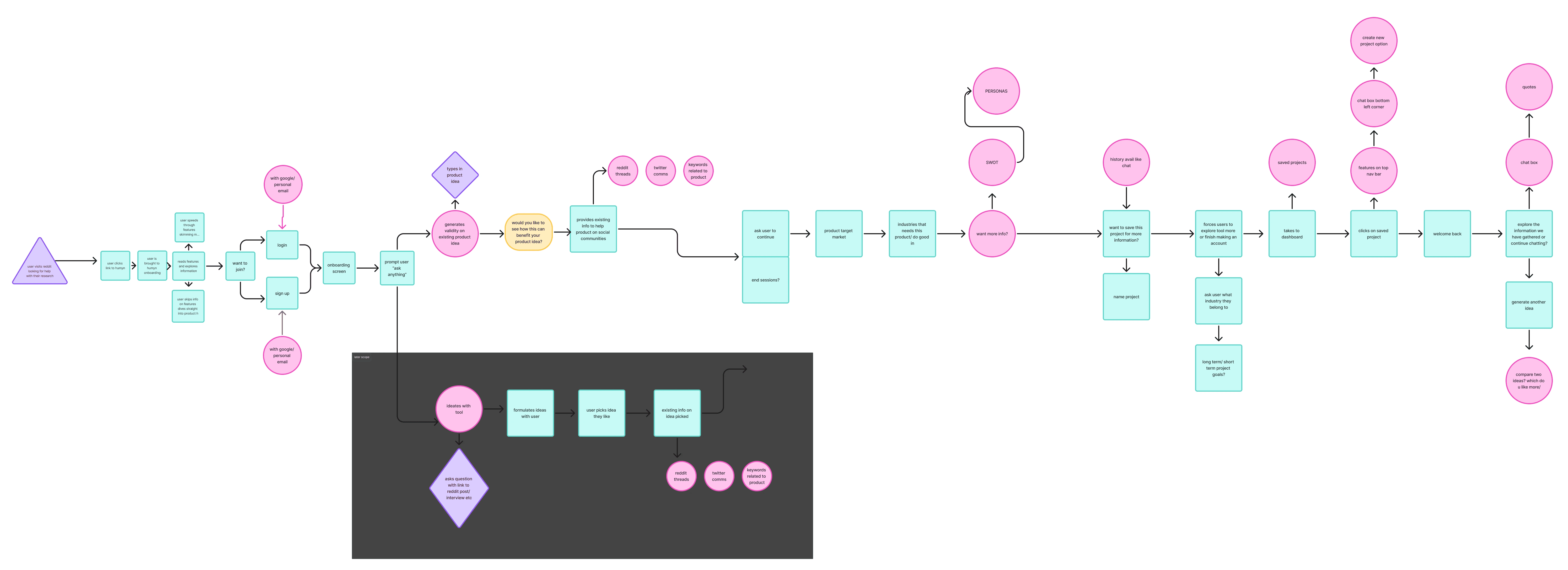
Designing with Intention
Balancing Ambition with Feasibility (Development)
I started by documenting the current-state user flow, then mapped every step into low-fidelity screens to visualize friction points.


Next came the hi-fi future scope, a complete design system aligned with our roadmap and engineering limits. Working side-by-side with developers, we ensured every design was buildable now, not someday.
By leveraging shadcn/ui, we focused less on reinventing UI and more on refining user experience, flow, and clarity.

How we built a brand people believed in.
Selling the Idea Before the Product
Once the product foundation was stable, the focus shifted to identity.
Humyn’s brand was designed to feel intelligent yet empathetic
clean, bold, and human-centered.
Hue the penguin became the mascot, symbolizing the ability to “dive deep” into human insight.

Marketing & Community Growth
I led all marketing and growth efforts, designing campaigns, creating visuals, and building community across every channel.
1K+ followers across X, Instagram, Threads, and TikTok
500+ Discord members actively testing early builds and giving us feedback loops.
Regular storytelling posts that blended design progress with product philosophy
We positioned Humyn not as another “AI tool,” but as a brand that stands for understanding people before building for them.
Sales & Pipeline Setup
With the brand gaining traction, I set up HubSpot CRM to manage inbound interest and sales stages.
We created personalized demo flows, automated follow-ups, and segmented outreach for founders, marketers, and UX teams.
This stage connected brand awareness to conversion, leading to 500+ Waitlist Signups.
Almost there.
Preparing for Launch
As we stabilized core systems, I focused on launch readiness — bridging design, development, and business operations.
The finally steps of wrap up before alpha launch were:
Docs Site — Built comprehensive documentation using Mintlify for onboarding, guides, and use cases.
HubSpot + CRM — Linked beta signups, outreach, and user tracking.
Email Marketing Campaigns and Final Social Pushes.
Compliance & Accessibility — Ensured compliance, legal setup (LLC), and data handling standards.
Dev Coordination — Finalized API integrations, budget and set sprint timelines through March 2026, and aligned deliverables for public release.
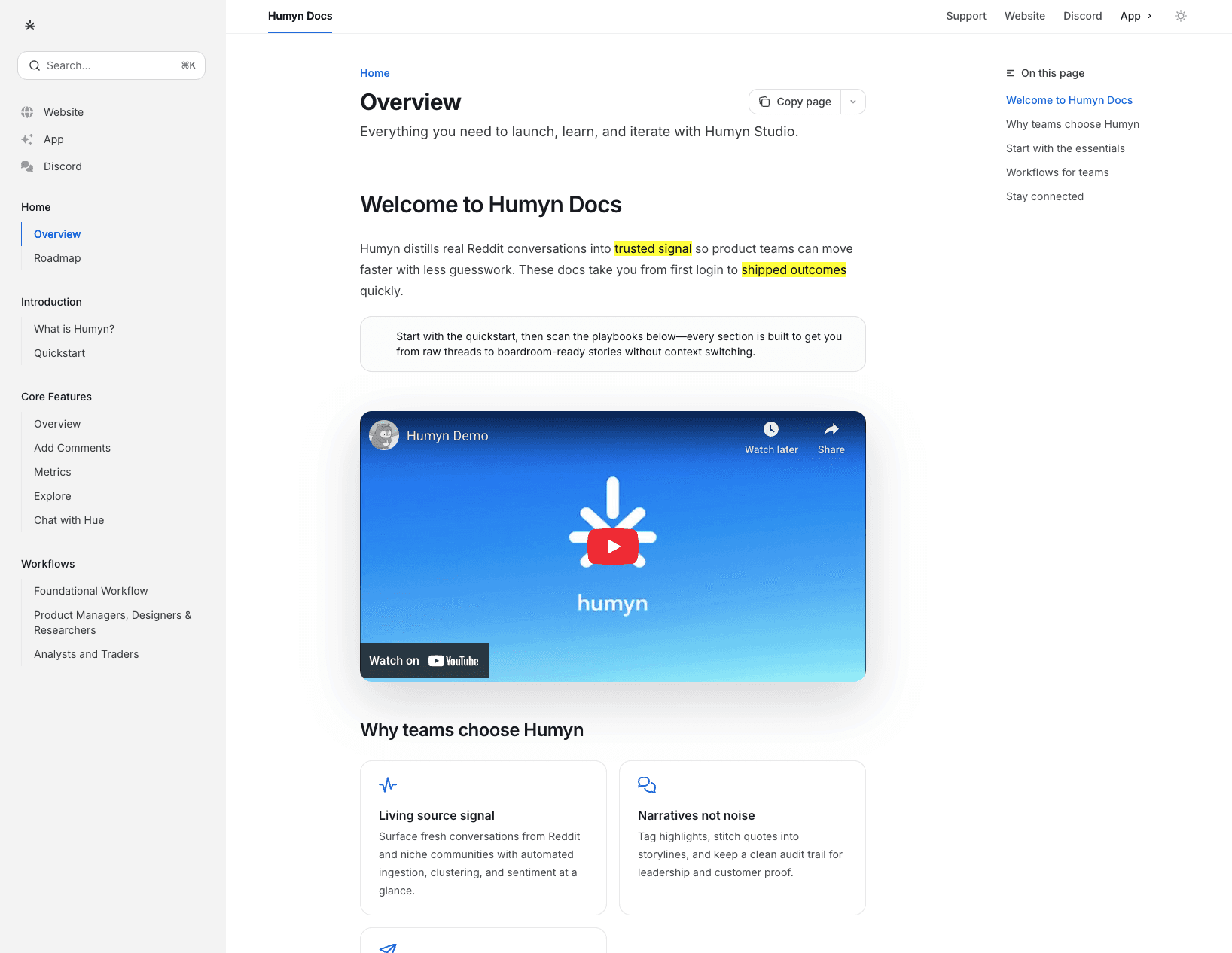
Tooling & Stack
Current State
Where we are right now…
Humyn is live in closed beta.
Our current focus:
Strengthening API performance and real-time data pipelines.
Polishing user onboarding, visual hierarchy, and report sharing.
ML Pruning through Frontend Navigation.
Finalizing documentation, sales workflows, and growth experiments
Implementing Agentic AI Workflows to speed manual processes, and alignment through SDLC.
Reflection
What I've learnt & What I'm excited for…
Humyn started as a small experiment.
It was a reflection of everything I’ve learned about advertising, design, and computer science.
I’ve learned more from this journey than I ever could have guessed, not just about tools and tech, but about people, leadership, and myself.
I learned how to lead with confidence even when the path wasn’t clear.
How to see what’s missing, rally a team, and build the solution from scratch.
How to pick up new skills fast, design, development, sales, strategy, and turn it into something real.
Every obstacle became a lesson. Every lesson turned into progress.
And now, looking at how far we’ve come, I’m astonished by what's been accomplished but ready to see how much more can be done.
